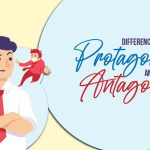For years, comic books have fascinated readers of all ages, delivering a unique combination of storytelling and artwork that can take us to fantasy realms and make us laugh, weep, and even consider life’s complexity. This tutorial is for you if you’ve ever wanted to make your own comic book with hilarious cartoon drawings, adventurous adventures, or strong tales.
In this detailed blog article, we’ll go over the processes of creating your own comic book and finally getting it published.
Read: Instagram Book Marketing: 7 Steps on How to Promote Your Book on Instagram
There is a road for you in the world of comics, whether you are a budding artist, a writer, or simply a comic lover. Here’s a list of steps to effectively create & publish a comic book in 2023:
Part 1: Preparing to Create Your Comic
- Find Your Inspiration: Before you begin your comic book adventure, you must first identify your source of inspiration. This first phase establishes the tone for your creative process. Consider what tale you want to tell and what makes it appealing. Is it a unique combination of genres, humour, action, or drama? Everyday life, personal experiences, and even your favourite comics and literature may serve as sources of inspiration. Don’t rush through this stage; instead, let your thoughts simmer until you get that “aha” moment. Inspiration is the fuel that drives your creativity, so feed it and you’ll be better able to create an engaging comic.
- Develop Your Story: Once you’ve identified your inspiration, it’s time to mould it into a well-crafted story. Regardless of whether you’re planning a one-shot comic or an entire series, outlining your plot, characters, and setting is essential. Think holistically about your narrative, considering the beginning, middle, and end. What journey do you want your readers to embark on? Don’t forget character arcs and subplots; they add depth and complexity to your tale. This is the stage where your comic’s unique identity takes shape. Dedicate time to world-building, character development, and plot structure. A strong foundation will make the rest of your comic creation process smoother.
- Scripting Your Comic: If you’re the writer of the comic, scripting is your next crucial step. The script serves as the blueprint for your comic’s visual and narrative elements. It outlines the dialogue, panel layout, and actions for each page. Clear and precise instructions are vital, especially when collaborating with artists. Comic script formats may vary, but the key is to ensure your vision translates effectively to the page. Describe what each panel should depict, including character expressions, backgrounds, and any essential details. A well-crafted script serves as a roadmap, guiding both you and the artist in bringing your story to life.
- Sketching and Storyboarding: For artists, this phase brings your comic to life visually. Begin by sketching your characters, scenes, and key moments. Storyboarding is a valuable tool for planning the layout of each page, ensuring a seamless narrative flow. Whether you prefer traditional pencil and paper or digital tools like Adobe Photoshop or Clip Studio Paint, this step lets you explore composition, angles, and pacing. Sketching allows you to fine-tune character designs and settings, ensuring they align with your story’s vision. With a solid foundation in sketches and storyboards, you’ll be ready to move on to the detailed artwork that will make your comic truly shine.
You may also read: List of Top 10 Famous Ravinder Singh Books of AlTime
Part 2: Creating Your Comic
- Drawing and Inking: Once your sketches and storyboards are prepared, it’s time to dive into the artistry of your comic. Drawing is where your characters and scenes come to life, and it’s essential to invest time and effort into adding details and conveying the emotions of your characters. Whether you’re drawing by hand or using digital tools, pay attention to character expressions, backgrounds, and the overall composition of each panel. Take your time to ensure that your artwork aligns with your narrative’s vision. If you’re not confident in your inking skills, consider collaborating with an inker who specialises in adding clean and precise lines to your drawings. Alternatively, you can learn to use digital tools for inking, which allows for more flexibility and precision in achieving the desired look for your comic.
- Adding Colour and Lettering: Colouring is a pivotal stage in bringing your comic to life. You can choose to apply colour traditionally with markers or opt for digital methods using software like Adobe Illustrator or Procreate. When selecting colours, be mindful of how they complement the mood and tone of your story. Colours can evoke emotions and enhance storytelling, so choose your palette thoughtfully. Additionally, incorporate lettering for dialogue, captions, and sound effects. Legitimate and well-placed lettering is crucial for ensuring that readers can follow the narrative seamlessly. Consider the font styles and sizes that best suit your comic’s aesthetic while maintaining readability. A well-executed colouring and lettering process enhances the visual and storytelling aspects of your comic.
- Panel Layout and Page Design: The layout of each page and the flow of panels from one to the next significantly impact your comic’s pacing and storytelling effectiveness. Experiment with different panel placements, sizes, and arrangements to find what works best for conveying your narrative. The layout should guide the reader’s eye naturally, ensuring that the story unfolds in a coherent and engaging manner. Panel composition can emphasise crucial moments, build tension, or create visual interest. Think about how each page’s design contributes to the overall impact of your comic. A well-structured layout enhances the reader’s experience and helps them immerse themselves in your story.
- Review and Edit: After you’ve completed the initial artwork and lettering, it’s crucial to step back and review your work with a critical eye. Look for any inconsistencies, errors, or areas that require improvement. Pay attention to details like character design consistency, visual storytelling clarity, and any issues with lettering or colouring. Seeking feedback from friends, family, or fellow comic enthusiasts can provide valuable perspectives and catch issues you might have missed. Editing and refining your comic is an ongoing process, ensuring that it meets your artistic standards and effectively communicates your story to your intended audience.
You may also like: Book Review: Lord of the Flies by William Golding
You may also like: HEA Meaning in Books, Texts, and Pop Culture Explained
Part 3: Publishing Your Comic
- Self-Publishing: Self-publishing empowers comic creators with creative control and ownership of their work. This option provides various avenues for sharing your comic with the world. You can choose to produce physical copies of your comic through print-on-demand services or local printers, which gives you tangible copies to distribute or sell at conventions. Additionally, consider digital self-publishing by releasing your comic online through platforms like ComiXology, Gumroad, or even your own website. This approach offers convenience to readers and allows you to reach a global audience. Crowdfunding platforms like Kickstarter or Indiegogo are excellent tools to finance your project, covering printing costs and other expenses. Self-publishing gives you the freedom to manage your comic’s production and distribution, making it a viable option for independent creators.
- Submit to Publishers: If you prefer the traditional route and wish to collaborate with established comic book publishers, research companies that align with your comic’s genre and style. Carefully read and follow their submission guidelines, which can typically be found on their websites. Prepare a polished submission package that includes your comic script, sample artwork, and a compelling pitch. It’s essential to be persistent and resilient in this process, as rejection is a common part of the industry. Many renowned comic artists and writers faced numerous rejections before achieving success. Keep refining your craft and revisiting your submissions to increase your chances of attracting the interest of a publisher who recognises your talent and potential.
- Online Comics: Publishing your comic online is an effective way to reach a vast and diverse audience. You can create a dedicated website to host your comic or leverage specialised webcomic platforms like Tapas, Webtoon, or Line Webtoon. These platforms provide valuable exposure to a community of readers actively seeking webcomics. Sharing your comic on social media platforms, such as Instagram, Twitter, or Facebook, can help expand your online presence and engage with potential readers. Building a fanbase through interaction, responding to comments, and participating in webcomic communities can enhance your comic’s visibility and popularity. Online comics offer accessibility and convenience, allowing readers to enjoy your work from anywhere in the world with an internet connection.
You may also read: List of Top 10 Famous Durjoy Dutta Books of All Time
Part 4: Tips and Resources
- Learn from Others: Studying the work of your favourite comic authors is an important part of developing your own style. You may learn a lot about storytelling tactics, character development, artwork, and panel layouts by attentively reading their comics. Take note of how they arrange their storylines, create suspense, and elicit emotions. Analysing their work helps you grasp the principles and styles that resonate with you. This does not imply that you should replicate their work, but rather that you should learn from their triumphs and apply what you’ve learned to your own distinctive narrative style. It’s a never-ending process of development and refinement, and by studying the masters of the art, you can constantly enhance your abilities and establish your own individual comic-making style.
- Attend Comic Conventions: Comic conventions are bustling creative centres, providing great chances for budding comic creators. These activities provide various benefits, whether attended in person or remotely. For starters, they provide a venue for you to network with other writers, industry experts, and comics lovers. You may share your ideas, get comments, and even discover colleagues or mentors. Second, seasoned comic artists and authors frequently participate in panels, seminars, and lectures at conventions. These lectures provide invaluable insights into the industry, covering everything from the creative process to the economic side of comics. Finally, conferences provide opportunities to exhibit your work, whether through artist alleys, independent publisher booths, or online outlets like social media. It’s an opportunity to get feedback, grow your audience, and develop your presence in the industry.
- Keep Practicing: The path to becoming a skilled comic creator involves continuous practice and persistence. Early setbacks and challenges are integral parts of the learning process. Don’t be discouraged by initial difficulties; instead, view them as opportunities for growth. The more you practice writing scripts, drawing characters, and crafting compelling narratives, the more refined your abilities will become. Consistency is key, and setting aside dedicated time for comic creation can help you progress steadily. Embrace experimentation and don’t be afraid to make mistakes; they often lead to valuable lessons. As you practice, you’ll refine your storytelling techniques, improve your artwork, and develop your unique comic-making style. Remember that even the most accomplished comic creators started as beginners, and their success came from dedication and the determination to keep practicing and evolving their skills.
Read: Here’s a list of 15 Latest Marketing Trends to Promote Your Book in 2023
Creating and publishing your own comic book can be a rewarding journey filled with fun, creativity, and storytelling. Whether you’re a writer, artist, or both, the world of comics offers endless possibilities.
Start with a strong idea, develop your skills, and don’t be afraid to put your work out there. With dedication and perseverance, you can share your funny cartoon pictures or captivating stories with the world. So, grab your pen, tablet, or mouse, and let your comic adventure begin!
















